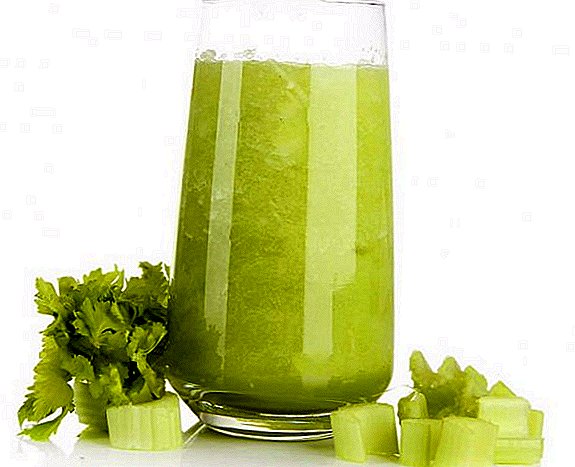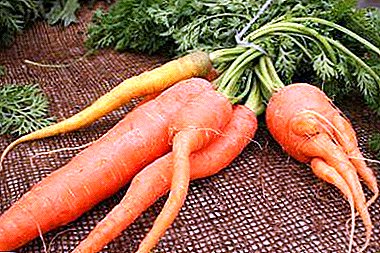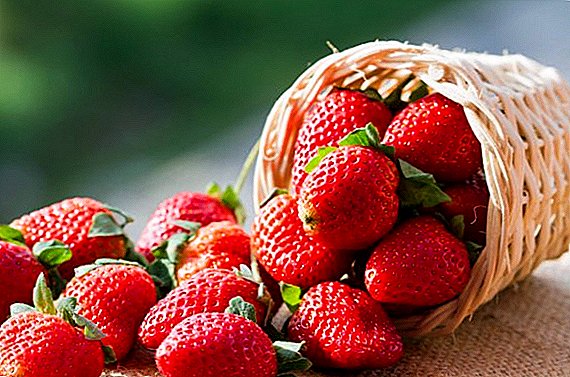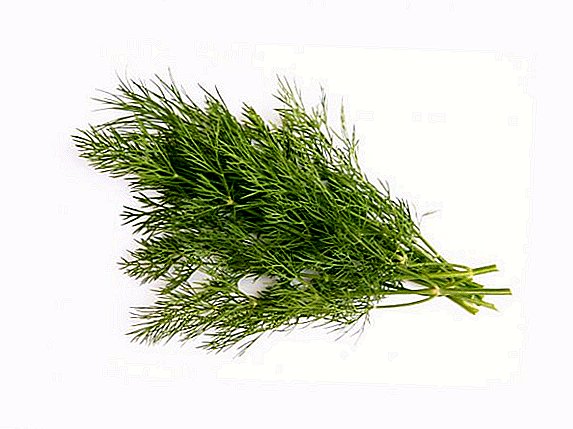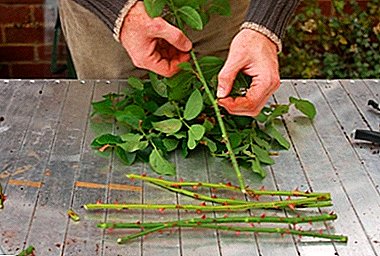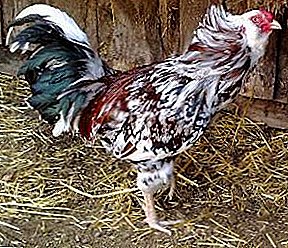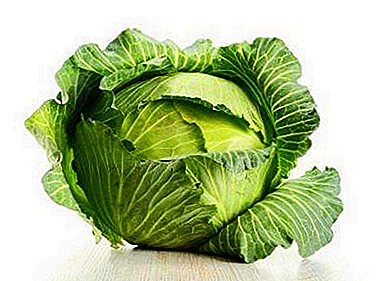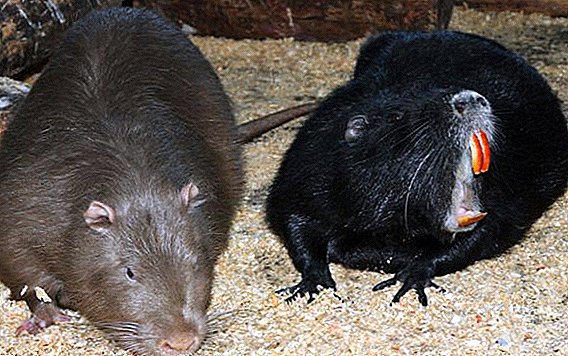 Breeding nutria for many farmers has become a profitable business, since this large rodent differs not only dietary meat, but also high-quality fur, which is used in light industry. Thanks to the breeding work, colored rocks of nutria were bred. Skins of such animals are valued more than ordinary standard skins. We present to your attention the description of the main colored breeds nutria with a photo.
Breeding nutria for many farmers has become a profitable business, since this large rodent differs not only dietary meat, but also high-quality fur, which is used in light industry. Thanks to the breeding work, colored rocks of nutria were bred. Skins of such animals are valued more than ordinary standard skins. We present to your attention the description of the main colored breeds nutria with a photo.
Did you know? In some countries, nutria coypu is massively destroyed, as wild individuals harm irrigation systems and dams.
Golden
Golden nutria differ from standard ones only in their characteristic beautiful, but uneven color. The intensity of the color decreases from the ridge of the animal to the stomach. The belly is pinkish and the eyes are brown.
Important! Nutrias of this breed are distinguished by low fecundity. Therefore, in order to get more offspring, it is recommended to cross them with the standard colored nutria. At the same time, only half of the cubs will have a golden-colored coat.
Keeping and feeding golden nutria does not differ from the care of standard animals.
Black
Black coypu was bred by breeders from Argentina. Purebred specimens have dense edges and a rich, sparkling coat color. They give the same offspring as standard nutria. When crossed with a normal animal, half of the offspring have a black color, and the other - a standard color. Skins are valued for their rich look. 
White Azeri
One of the largest nutria. The animals of this breed are distinguished by wool of a rich, bright white color. Sometimes there are individuals with pigmentation in the tail, ears and eyes, but not more than 10% of the total body area. When crossed inside the breed, only two out of three calves have the same white coat as their parents, the rest are standard. If crossed with the usual color nutria, only half of the offspring will inherit the white color. 
White italian
This breed was imported from Italy in 1958. Unlike white Azeri, wool of these nutria has a cream shade. The eyes are brown, not hairy parts of the body covered with pink skin. Characterized by the same fertility as standard animals. White puppies are born inside the breed, and when crossed with standard individuals, the white color remains in half of the offspring. 
Snowy
Bred as a result of crossing white individuals with gold. The coat has a white color with a silvery sheen. Tail, nose and paws - pink. The greatest offspring is obtained by crossing with Italian nutria. The three types of snowy nutria are almost the same in appearance. 
Silvery
Are a cross between white Italian and beige nutria with standard. On top of the coat has a dark gray color, and the color of the undercoat can vary from light gray to dark gray, from bluish to rich brown. The content does not differ from the content of standard individuals. 
Pearlescent
Appeared as a result of the crossing of white Italian nutria with beige. The skin of this animal has a silver-gray color with a cream shade. In general, the color resembles mother of pearl. At intrabreeding puppies are born uneven color, sometimes - unwanted dirty-gray shade. 
Dark brown
They have an almost black color on the back, but the sides are dark-gray, downy hair is bluish-tinged. 
Pastel
The wool of the coypus of this breed is characterized by a color from light brown to dark brown. Newborn puppies brighten over time. The darkest individuals resemble mature chestnuts in color. The difference in the brightness of the color of different parts of the body is negligible.
Lemon
Lemon nutria have a lighter color than golden. Get them when crossing white Italian individuals with beige or gold. However, in the brood, only part of the young will have a light yellow color, the so-called lemon color. If you cross inside the breed, then in the litter there will be animals of white, golden and lemon color. 
Beige
One of the most popular colored rocks. The coat color is brown with a smoky beige shade. In the sun, the fur of such nutria is molded with silver. In this case, the intensity of the beige color can vary from light to dark shades. They reproduce in the same way as standard individuals. 
Cream
These nutria have a brown back and a light beige belly. The eyes are dark red. The best color of the animals are at the age of 4-5 months, then yellowish shades may appear. On the nose the skin is brown, on the paws - pinkish-blue. In intrabreed mating, all the young will be cream, but when mating with a standard individual, all offspring will be standard.
Smoky
They differ from the standard only in a cleaner, brownish-free color. Eye color is brown. On the belly, the coat may have a grayish tint. Unpretentious care, multiply well. When mating with each other, they give offspring to a smoky color. As a result of crossing with standard individuals, only standard puppies are born. 
Brown Exotic
Bred, crossing black nutria with gold. At the same time receive an interesting combination of golden and black tones. On the back the coat is darker than on the belly. The pad is gray-brown. If you cross with each other and with standard nutria, you can get offspring of brown, black, golden, standard color. 
Did you know? The most beautiful hats obtained from the skins of brown nutria.
Pearl
They look similar to white Italian, but have a dark beige down. Born when crossing pastel with lemon or snow. The upper hair is greyish, the down on the back is brown, brightens towards the abdomen. 
Important! Experts do not recommend crossing pearl nutria inside the breed, because then 25% fewer puppies are born. It is better to cross them with pastels. At the same time 50% of the offspring will inherit pearl color.Having studied the breed of nutria with a description, it will be easy to make the right choice. Experts advise novice animal breeders to buy not nutria giants, but young individuals weighing about 2 kg. Nutrias are considered to be giants individuals with more than 12 kg.
When the regime of keeping and feeding is observed, colored nutria, as a rule, do not get sick, quickly grow and multiply, give high quality skins.


